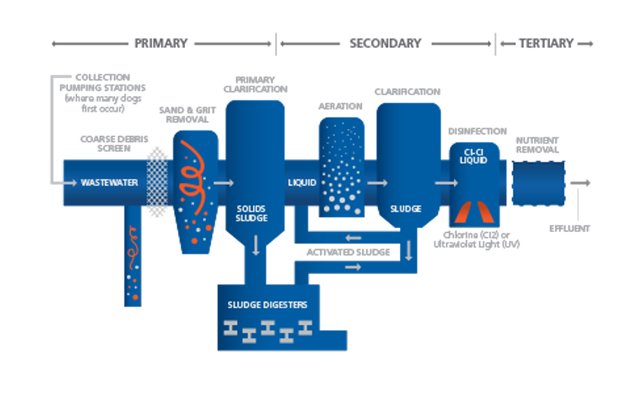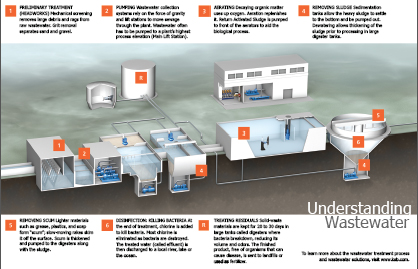Wastewater treatment refers to the physical, chemical, and biological processes used to remove pollutants from wastewater before discharging it into a body of water. Since the Clean Water Act was issued in 1972, there are now more than 16,000 publicly-owned wastewater treatment plants (POWTs) in operation in the United States.
Approximately 255,000 million gallons per day (mgd) of industrial wastewater—treated by chemical, physical, and biological processes—is discharged daily into U.S. waterways. Industries commonly reuse wastewater and process water as water availability becomes scarce, and they are challenged to provide environmentally sustainable wastewater treatment while reducing compliance costs and maintaining value for their businesses. Source: Water Environment Federation (www.wef.org)
Industrial wastewater vs. Municipal wastewater
Industrial wastewater treatment covers the mechanisms and processes used to treat wastewater that is produced as a by-product of industrial or commercial activities. After treatment, the treated industrial wastewater (or effluent) may be reused or released to a sanitary sewer or to surface water in the environment.
Municipal Wastewater (also called sewage) is usually conveyed in a combined sewer or sanitary sewer, and treated at a wastewater treatment plant. Treated wastewater is discharged into receiving water via an effluent pipe. Wastewater generated in areas without access to centralized sewer systems rely on on-site wastewater systems. These typically comprise a septic tank, drain field, and optionally an on-site treatment unit.
The Wastewater Treatment Process
A treatment plant uses a series of treatment stages (primary and secondary) to clean the water so that it may be safely released into a lake, river, or stream.
Primary treatment removes about 60 percent of suspended solids from wastewater. This treatment also involves aerating (stirring up) the wastewater, to put oxygen back in. The primary treatment process involves screening, pumping, aerating, removing sludge and scum, killing bacteria, and handling wastewater residuals (solids).
Secondary treatment removes more than 90 percent of suspended solids.
To better understand the wastewater treatment process, Download this map of the Wastewater Treatment process.





